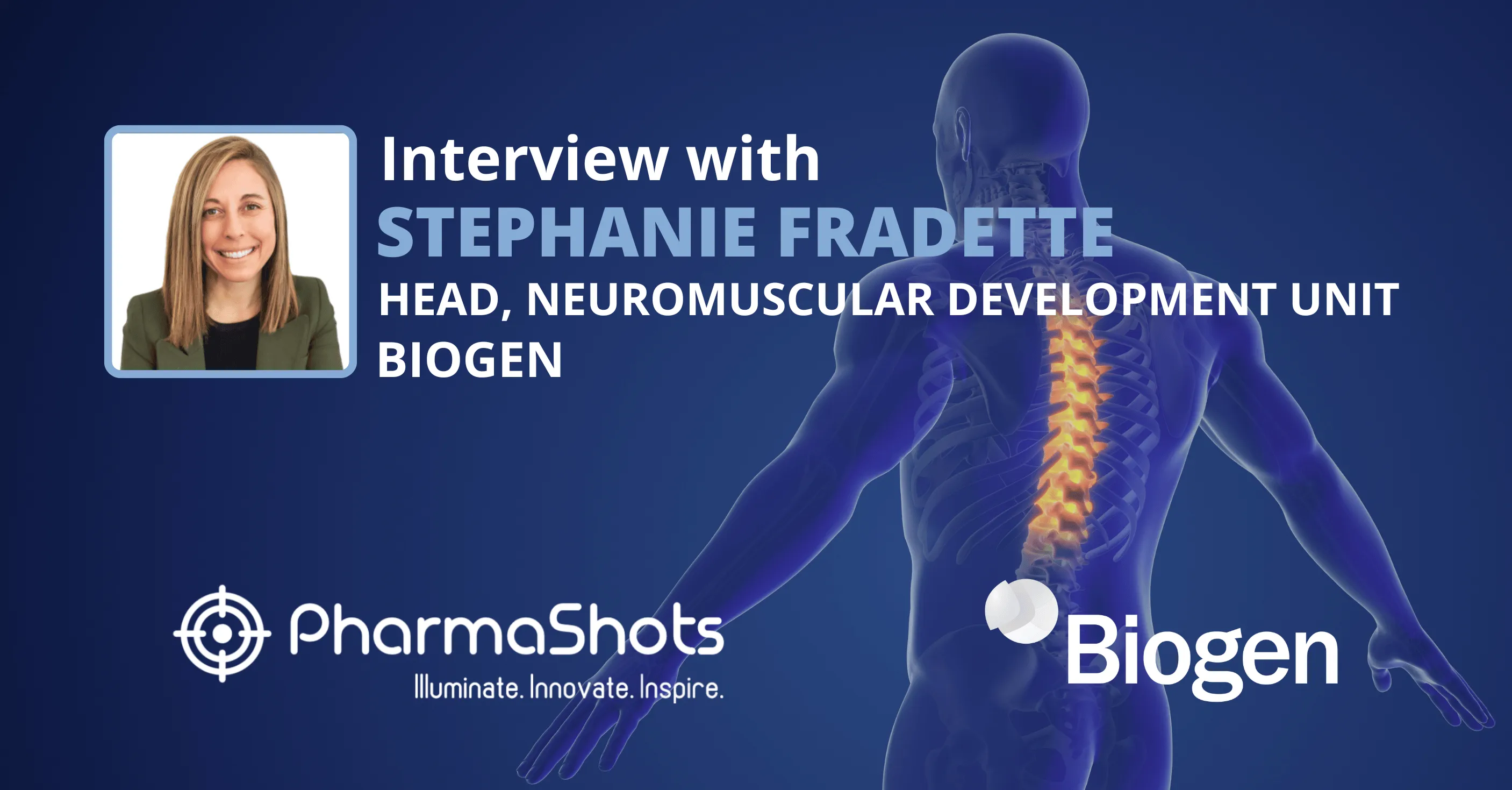
PharmaShots Interview: Medicenna's Dr. Fahar Merchant Shares Insights on the Bispecific Superkines
In an interview with PharmaShots, Dr. Fahar Merchant, CEO of Medicenna shares his views on the data of a new type of interleukin called bispecific Superkines, presented at AACR 2021
Shots:
- Bispecific Superkines can attack cold tumors, weakening the protection given to it by the tumor microenvironment and revealing it to the immune system
- Medicenna focuses on creating its Superkines from three major families of interleukins: IL-2, IL-4, and IL-13. These three families are known to modulate immune activity in 2000 different diseases
- The company is expected to file an application with regulators to initiate a P-I/Iia clinical trial for MDNA11 in mid-2021 for the treatment of solid tumors.
Tuba: What is the Medicenna Superkine Platform? Highlights its key features.
Dr. Fahar: On a high level, Medicenna's platform enables the transformation of natural interleukins into Superkines, which are enhanced compared to their natural counterparts. For example, Superkines can be designed to reverse immunosuppressive tumor microenvironments, deliver cell-killing agents without harming healthy cells, or turn off destructive autoimmune processes.
To enable their transformation, interleukins are engineered through directed evolution, where subtle changes are made to enhance their desired properties. This allows us to create a library of tunable Superkines, which as we just mentioned, are engineered to address the underlying mechanisms of the disease by selectively binding to certain receptor sub-types while avoiding others.
From this initial library, we then further design the selected Superkines via protein fusion, to enhance certain characteristics such as improving pharmacodynamics and safety or optimizing their half-life to limit dosing issues or to add new functions, such as the ability to deliver a payload of a cell-killing toxin specifically to cancer cells.
The Superkine platform gives us a lot of versatility with which to work, whether it is through picking an agonist or antagonist or eliciting a particular response when the molecule binds to its corresponding receptor.
Medicenna focuses on creating its Superkines from three major families of interleukins: IL-2, IL-4, and IL-13. These three families are known to modulate immune activity in 2000 different diseases.
Tuba: Discuss your robust pipeline of Interleukins? Also, shed light on next-generation Superkines.
Dr. Fahar: We have active research and preclinical pipeline, which speaks to the versatility of Medicenna's Superkine platform, for a variety of tumor types and even autoimmune diseases.
MDNA55 is our most advanced program which targets recurrent glioblastoma (rGBM). This molecule exploits the overexpression of the IL-4 receptor on the tumor surface and uses an IL-4 Superkine to deliver a tumor-killing payload specifically to tumor cells. To date, we have studied MDNA55 in 118 patients with rGBM, and reported compelling data demonstrating its superior efficacy and safety compared to the current standard of care. Median survival after just one treatment of MDNA55 was 14 months, with 20% of patients surviving more than 24 months, versus a 6-9-month median survival and 2% of patients surviving past 24 months with the current standard of care. MDNA55 has both fast-track and orphan drug status from the FDA and in September 2020 the FDA agreed for Medicenna to conduct an innovative open-label hybrid Phase 3 trial that allows the use of a substantial number of patients (two-thirds) from a matched external control arm to support regulatory approval of MDNA55 for rGBM. This hybrid trial design will reduce the overall number of subjects needed to enroll in the study to achieve the primary endpoint as well as reduce costs and timelines associated with the study. We are currently pursuing a strategic partnership to assist with the future clinical development of MDNA55.
MDNA11 is an IL-2 Superkine that is designed to overcome the shortcomings of the currently approved IL-2 therapy as well as improve upon competing programs in development. What differentiates MDNA11 is its impressive ability to selectively target the IL2Rß receptor to preferentially activate anti-cancer effector immune cells rather than toxic and pro-tumor regulatory T cells (Tregs). Additionally, this Superkine has been fused with recombinant human albumin, which facilitates further improvements over the currently approved IL-2 therapy, as it extends the half-life of the molecule by up to 24 hours and allows it to accumulate at the tumor site for effective localization.
MDNA209 is similar to our MDNA11 molecule, except that it is a super-antagonist calming the immune system whereas MDNA11 is a super-agonist that activates the immune system. This molecule has potential applications for autoimmune diseases where the body has an over-active immune system and produces aberrant T-cell responses. MDNA209 is currently in preclinical development.
Our pre-clinical asset, MDNA19-MDNA413 is from the Bifunctional Superkine Immunotherapies platform (BiSKITs) platform and was the subject of our recent AACR data. These are discussed in more detail below.
The variety of protein therapies with which we can fuse our Superkines to create novel BiSKITs opens the possibility of a deep pipeline of fusion molecules internally or in collaboration with other pharma companies. In addition to generating anti-body Superkine fusions or trifunctional. Superkines, we can also arm cell-based therapies and tumor-killing viruses with Superkines.
Tuba: What are bispecific Superkines? How do they 'warm up' cold tumors?
Dr. Fahar: Bispecific or Bifunctional Superkines, which Medicenna dubs as BiSKITs, are fusions of two Superkines, or a Superkine fused with an antibody such as a checkpoint inhibitor or a T-cell engager. The two ends of the molecule act synergistically to target a tumor based on the needs of cancer we aim to address.
An issue with checkpoint inhibitors is that they are unable to treat immunologically cold tumors because these tumors have been hidden from the immune system by the immunosuppressive cells in the tumor microenvironment (TME). Interleukins are cell signaling molecules, and Superkines build upon that role to find and bind receptors on cold tumors to unblind them to the immune system.
Possible mechanisms to warm up cold tumors include binding to the Type 2 IL4 receptor (IL4R' + IL13R'1) to block STAT6 signaling, which weakens the tumor's defenses by blocking the function of tumor-associated macrophages (TAMs) and myeloid-derived suppressor cells (MDSCs). Another approach is to specifically target the IL13R?2, a decoy receptor that is over-expressed on many tumors, and deliver a fusion Superkine or T-cell engager for the immune system to attack.
Tuba: What are the highlights of the poster presented at AACR 2021?
Dr. Fahar: The key highlights of the poster for MDNA19-MDNA413 are as follows:
- The molecule showed enhanced signaling in cancer-killing effector T cells and NK cells, and reduced activation of pro-tumor Treg cells corresponding to a 209-fold and 90-fold enhancement in CD8/Treg and NK/Treg ratios, respectively, when compared to native IL-2.
- MDNA19-MDNA413 selectively binds and inhibits IL-4 and IL-13 signaling via IL13Ra1, which is normally associated with pro-tumoral effects due to stimulation of MDSCs and M2a polarization of TAMs. There are two receptors which the MDNA419 portion can target: IL13Ra1 and IL13Ra2. IL13Ra1 is the receptor that the molecule needs to target to elicit an effect, and MDNA19-MDNA413 is ~240 times more selective for IL13Ra1 when compared to native IL-13.
- MDNA19-MDNA413 potently inhibited IL-4- and IL-13-mediated pSTAT6 activity with an IC50 of 8.0 and 12.3 nM, respectively.
- MDNA19-MDNA413 effectively inhibited IL-13-induced polarization of pro-tumor M2a macrophages.
Tuba: Discuss the mechanism of action of MDNA19 and MDNA413?
Dr. Fahar: The MDNA19-MDNA413 BiSKIT seeks to achieve two objectives: Block the pro-tumoral action of IL-4 and IL-13 on cells of the TME and, at the same time, activate CD8+ T cells and natural killer cells to attack the tumor.
The MDNA413 portion binds to the dual IL4R?/IL-13R?1 receptor on TME cells, which inhibits the phosphorylation of STAT6. This disrupts downstream signaling and, ultimately, inhibits the M2a polarization of TAMs, and prevents the MDSCs from suppressing T cell function. This effectively turns the tumor hot.
The MDNA19 portion is highly specific to the IL2Rß, which activates the anti-cancer effector immune cells. Since the MDNA413 end of the molecule has blocked the immunosuppressive effects of the TME, the activated T cells and natural killer cells are better able to act on the tumor.
The image below shows a visual representation of this mechanism.

Source: Medicenna
Tuba: When can we expect the initiation of clinical studies of any of your pre-clinical candidates? And in which indications?
Dr. Fahar: We expect to file an application with regulators to initiate a Phase 1/2a clinical trial for MDNA11 in mid-2021 for the treatment of solid tumors.
We expect to announce a clinical candidate from our BiSKITs platform later this year for a yet to be determined oncology indication.
Tuba: Are you open to collaborations to advance your pipeline?
Dr. Fahar: Yes. We are currently seeking a partner to complete a Phase 3 registration trial for MDNA55 (IL-4 and toxin fusion).
We are open to collaborations on our BiSKITs platform with companies that have their own proprietary antibodies, oncolytic viruses, or CAR-T programs, all of which could benefit from one or more of our Superkines.
Tuba: What motivates the company to work on interleukins? How can you say that it will transform people's lives?
Dr. Fahar: For a very long time, the interleukin therapy field had not seen any meaningful advancements. Of course, there was an approved interleukin therapy (Proleukin), but it was highly toxic and is reserved for when all else has failed.
However, as the industry shifted towards finding more innovative means to treat tumors, interleukins ' once again ' resurfaced, but this time with new ways of harnessing their effects without causing undue toxicities.
Medicenna's Superkine platform was created with the purpose of realizing the full potential of interleukins not just for cancer, but also in other disease areas as well because we firmly believe that Superkines can form the backbone of a new class of immunotherapies that can address significant unmet needs.
A good example of this is MDNA55 and rGBM. The current standard of care for rGBM is surgical resection, radiation, and chemotherapy. There has been no new standard therapy in decades since this is an incredibly difficult tumor to treat. Because of the engineered interleukin at its core and the mechanism of the therapy, MDNA55 has shown substantial improvements in survival compared to the standard of care.
With interleukins, and Superkines specifically, we see many more opportunities to revisit the standard of care for many cancers and meet the significant unmet needs of patients who are in desperate need of hope.
About Dr. Fahar Merchant:

Dr. Merchant is a 25-year biotech veteran, a serial entrepreneur, and co-founder of Medicenna. He has a Ph.D. in Biochemical Engineering from Western University.
Tags

This content piece was prepared by our former Senior Editor. She had expertise in life science research and was an avid reader. For any query reach out to us at connect@pharmashots.com














